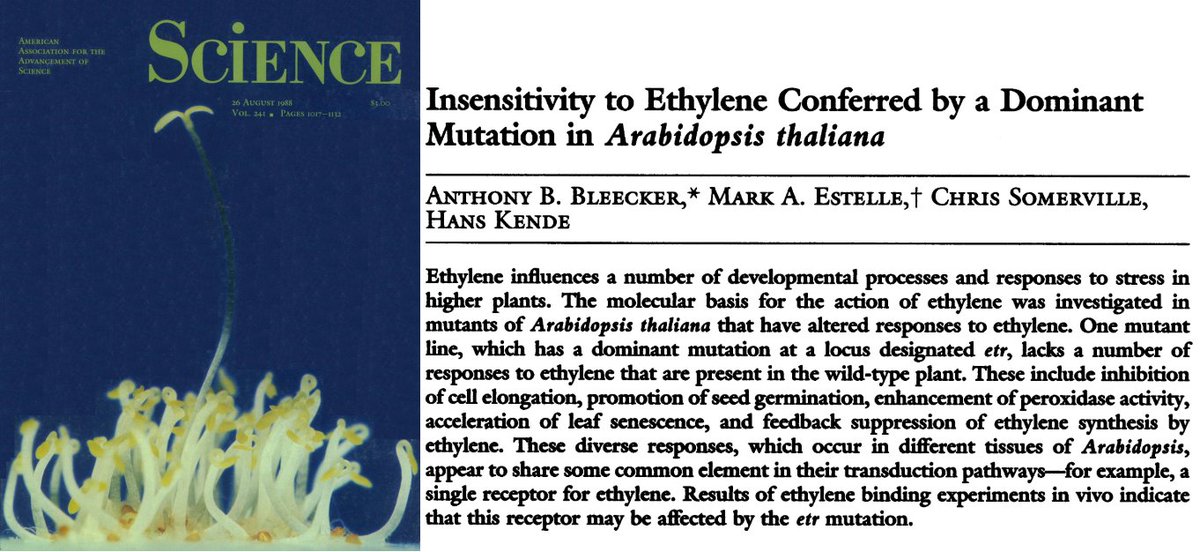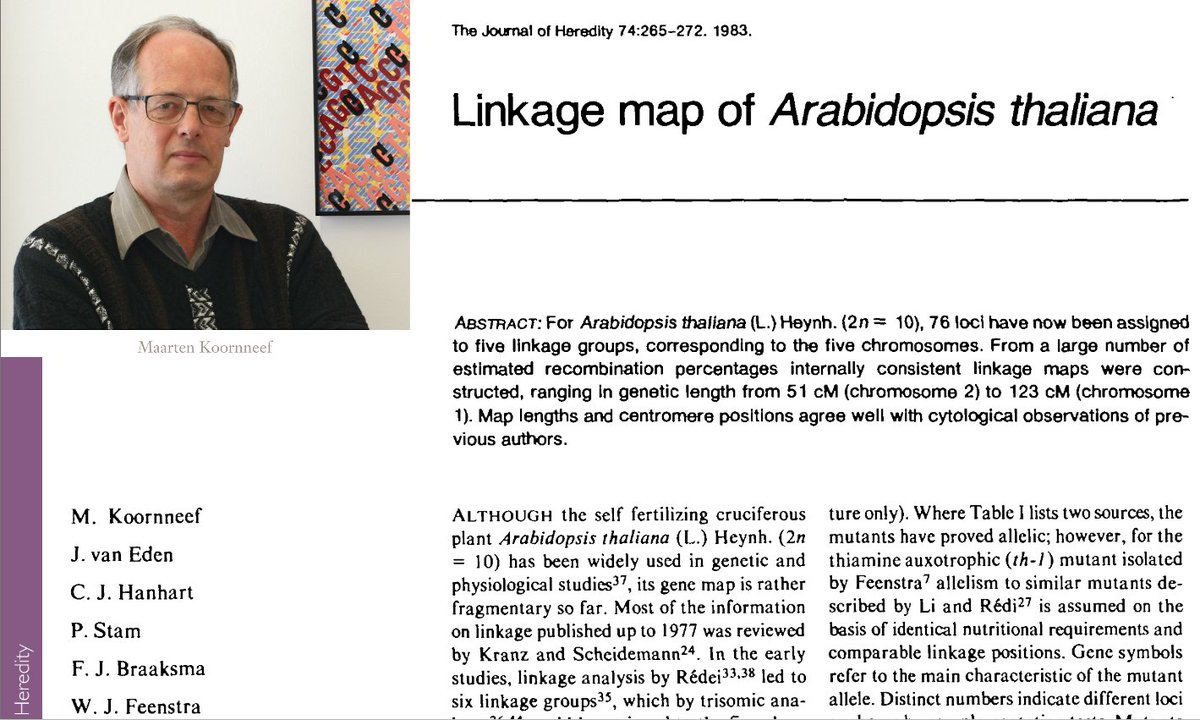#PlantScienceClassics #13: Floral Dip. Almost 25 years ago, in 1998, Steven Clough & Andrew Bent published their geniously simple Arabidopsis transformation protocol @ThePlantJournal: Dipping a plant upside down into Agrobacterium solution - et voilà! doi.org/10.1046/j.1365… 

I have covered the plant transformation backstory in Classic#6, the T-DNA, so here I will focus on the events after 1983, the year plant transformation was established. These first transformants all were plants regenerated from cultured cells as calli.
https://twitter.com/somssichm/status/1447480992176898051
Simply transforming an adult plant was not yet possible. One of the prerequisite toward this aim was the acceptance of Arabidopsis thaliana as a model plant (see also Classic#4), and the demonstration that A. thaliana was transformable via Agrobacterium.
https://twitter.com/somssichm/status/1444200882728366082
The Monsanto lab & @RobbFraley were already involved in the race toward the first transgenic plant (1977-1983), & in 1986 they added a @ScienceMagazine paper showing that A. thaliana could indeed be transformed by Agrobacterium, regenerating transgenic plants from leaf discs. 

So the first Arabidopsis transformants were still obtained via regeneration. A first change to this laborious technique came in 1987 at the hands of Kenneth Feldmann & David Marks, who co-cultured germinating Arabidopsis seeds with Agrobacteria, obtaining transformed plants. 

But the next major improvement came in 1993, exactly a decade after the first transgenic plants were created, when Nicole Bechtold, Jeff Ellis & Georges Pelletier @INRAE_Intl /@CSIRO published their vacuum infiltration method to transform adult plants. 

They also used the GUS-reporter (Classic#11), expressed from the CaMV35S promoter (Classic#9) in their experiments, demonstrating successful transformation via GUS staining of flowers & roots by vacuum infiltration of the GUS-substrate 8 days after Agrobacteria infiltration. 

The vacuum-infiltration method meant a giant leap forward, both in enhancing transformation efficiency & reducing labor. However, the plants still had to be uprooted from the soil, & everybody using the method at the time can testify that the vacuum could make things messy.
The 1998 Floral Dip paper got rid of these last problems. Clough & Bent showed that simply dipping the above-ground part of the plant upside down into Agrobacterium solution, keeping them in a humid environment & repeating this after 5 days had great transformation efficiencies! 

Floral dip remains the most widely used transformation protocol for Arabidopsis, easily exemplified by the number of citations it has accumulated (despite too many authors not even citing it in their method sections). It is now one of the most cited plant science papers. 

Finally, in 2006, Elke Logemann & colleagues @mpipz_cologne showed that it is not even necessary to grow a large Agrobacterium liquid culture for floral dip to work, but that it’s sufficient to scrape a bacterial carpet from a petri dish, dissolve in medium & dip the plants. 

Of course, this ease of transformation is restricted to Arabidopsis, and other plants still need to go through cell culturing and tissue regeneration, but this just proves again how important the adoption of Arabidopsis thaliana as a universal plant model has been in the 1980s.
Further reading about plant transformation can be found here:
A Short History of Plant Transformation
peerj.com/preprints/2755…
A Short History of Plant Transformation
peerj.com/preprints/2755…
• • •
Missing some Tweet in this thread? You can try to
force a refresh




















